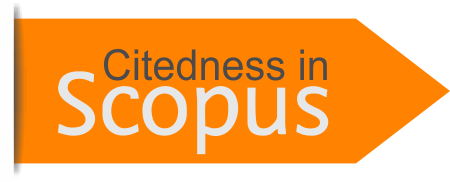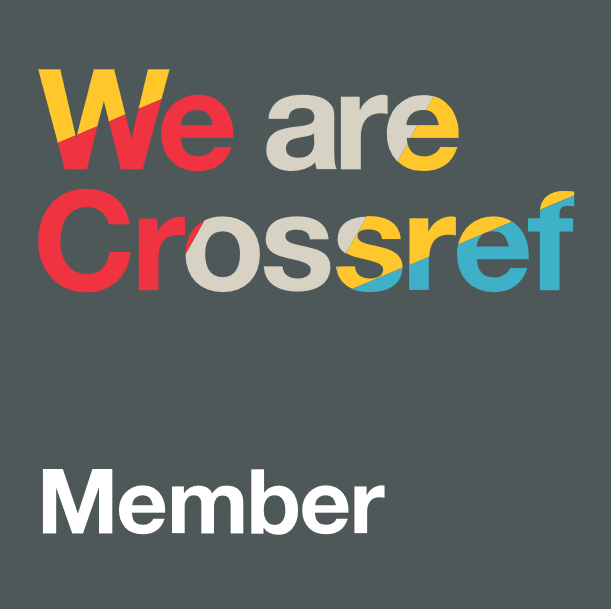Realistic mathematics for aerospace engineering students:Design research using math mobile apps
DOI:
https://doi.org/10.31629/jg.v10i1.6895Keywords:
realistic mathematics education, aerospace engineering students, design research, mathematics mobile application, calculusAbstract
The "realistic" concept in Realistic Mathematics Education (RME) is often confined to everyday contexts. In contrast, for aerospace engineering students, realistic mathematics should reflect the mathematical applications in their academic and future professional environments. This study aimed to design and evaluate instructional activities grounded in RME principles, integrating mathematics mobile applications to support conceptual understanding and reasoning. Using a design research approach, the study involved a questionnaire distributed to alums and third-year students, followed by two implementation cycles with first-year aerospace engineering students. The focus was on integral strategies in calculus, utilizing Photomath to bridge informal and formal mathematical reasoning. Results indicate that students engaged actively with the applications and demonstrated improved reasoning skills, particularly in inductive and imitative reasoning. This study highlights the potential of contextualized digital tools in supporting realistic mathematics learning in higher education. It suggests directions for aligning university-level mathematics with its practical applications in other disciplines, such as aerospace engineering.
Downloads
References
Anggraini, R. S., & Fauzan, A. (2020). The effect of realistic mathematics education approach on mathematical problem-solving ability. Edumatika: Jurnal Riset Pendidikan Matematika, 3(2), 94. https://doi.org/10.32939/ejrpm.v3i2.595
Armiati, Permana, D., & Noperta. (2019). The practicality of realistic mathematics education based mathematics learning materials for grade X vocational high school students construction and property engineering program. International Journal of Scientific and Technology Research, 8(10), 1062–1066.
Cecil, J., Ramanathan, P., & Mwavita, M. (2013). Virtual learning environments in engineering and STEM education. Proceedings - Frontiers in Education Conference, FIE, January 2021, 502–507. https://doi.org/10.1109/FIE.2013.6684874
Dhungana, S., & Thapa, R. (2023). Ways of developing creative thinking and reasoning of students in mathematics learning. Mathematics Education Forum Chitwan, 8(1), 57–75.
Elsayed, A. M., & Almahri, A. M. (2023). Developing mathematics achievement and inductive reasoning: A proposed technique according to brain compatible learning theory. Journal of Higher Education Theory and Practice, 23(17), 115–125. https://doi.org/10.33423/jhetp.v23i17.6537
Evtushenko, O., Toporkova, O., Kokhashvili, N., & Yankina, E. (2023). Digitalization in engineering education: practice challenges and opportunities. E3S Web of Conferences, 371. https://doi.org/10.1051/e3sconf/202337105072
Funny, R. A. (2014). Students’ initial understanding of the concept of conservation of area. Journal on Mathematics Education, 5(1), 57–65.
Goold, E. (2012). The role of mathematics in engineering practice and the formation of engineers. National University of Ireland Maynooth.
Goold, E. (2014). Putting mathematics “into a form that a non-engineer will understand.” SEFI Annual Conference 2014.
Hafni, R. N., Herman, T., Nurlaelah, E., & Mustikasari, L. (2020). The importance of science, technology, engineering, and mathematics (STEM) education is to enhance students' critical thinking skills when facing Industry 4.0. Journal of Physics: Conference Series, 1521(4), 0–7. https://doi.org/10.1088/1742-6596/1521/4/042040
Heuvel-Panhuizen, M. V. D. (1996). Assessment and realistic mathematics education. Freudenthal Institute, Mathematics and Computer Science Education, Tiberdreef 4, 3561 GG Utrecht, The Netherlands.
How, M. L. (2022). Advancing multidisciplinary STEM education with mathematics for future-ready quantum algorithmic literacy. Mathematics, 10(7). https://doi.org/10.3390/math10071146
Hr, B. M., Sukandi, & Dewi, N. P. E. L. (2021). Pengaruh pembelajaran matematika realistik ditinjau dari gaya belajar mahasiswa teknik sipil. Media Pendidikan Matematika, 9(2), 84–94. https://doi.org/10.33394/mpm.v9i2.4473
Huda, A., & Armiati, A. (2020). The development of learning devices with realistic mathematics education based on mechanical engineering and automotive engineering programs. Journal of Physics: Conference Series, 1554(1). https://doi.org/10.1088/1742-6596/1554/1/012024
Ilyas, M., Meiyani, E., Ma'rufi, M., & Kaewhanam, P. (2022). Improving students' ability to learn mathematics using the science, technology, engineering, and mathematics (STEM) approach. Frontiers in Education, 7(October), 1–12. https://doi.org/10.3389/feduc.2022.966687
Juandi, D., Kusumah, Y. S., & Tamur, M. (2022). A meta-analysis of the last two decades of realistic mathematics education approaches. International Journal of Instruction, 15(1), 381–400. https://doi.org/10.29333/iji.2022.15122a
Kazu, I. Y., & Yalcin, C. K. (2021). The Effect of Stem education on academic achievement: A meta-analysis study. TOJET: The Turkish Online Journal of Educational Technology, 20(4), 101–116. https://doi.org/10.31014/aior.1993.05.02.489
Kortemeyer, J., & Biehler, R. (2022). Analyzing the interface between mathematics and engineering in basic engineering courses. 669–692. https://doi.org/10.1007/978-3-031-14175-1_32
Laurens, T., Batlolona, F. A., Batlolona, J. R., & Leasa, M. (2018). How does realistic mathematics education (RME) improve students’ mathematics cognitive achievement? Eurasia Journal of Mathematics, Science and Technology Education, 14(2), 569–578. https://doi.org/10.12973/ejmste/76959
Le Clainche, S., Pérez, J. M., & Ferrer, E. (2017). Mathematics applied to engineering processes: A practical guide to increase students' motivation. EDULEARN17 Proceedings, 1(July), 1841–1850. https://doi.org/10.21125/edulearn.2017.1389
Lippert, H. P. (2020). A mixed methods approach to understanding math anxiety among engineering students in calculus using their own words and by analysis of correlations among math anxiety, math attitude, and math competence. Keiser University.
Martinez-Lopez, R. (2019). Big five technologies in aeronautical engineering education: scoping review. International Journal of Aviation, Aeronautics, and Aerospace, 6(3), 12.
Nuraida, I., & Amam, A. (2019). Hypothetical learning trajectory in realistic mathematics education to improve the mathematical communication of junior high school students. Infinity Journal, 8(2), 247. https://doi.org/10.22460/infinity.v8i2.p247-258
Öztop, F. (2023). A Meta-analysis of the effectiveness of digital technology-assisted STEM education. Journal of Science Learning, 6(2), 136–142. https://doi.org/10.17509/jsl.v6i2.52316
Patil, M. N., Rangari, V. A., Pawar, A. S., & Dubey, S. (2022). Applications of engineering mathematics in real life civil engineering: Practical examples. Smart Technologies for Energy, Environment and Sustainable Development, 1, 241.
Rahman, R. A., Yusof, Y. M., & Baharun, S. (2012). Improving the teaching of engineering mathematics using action research. Procedia - Social and Behavioral Sciences, 56(1), 483–493. https://doi.org/10.1016/j.sbspro.2012.09.680
Star, J. R., Chen, J. A., Taylor, M. W., Durkin, K., Dede, C., & Chao, T. (2014). Studying technology-based strategies for enhancing motivation in mathematics. International Journal of STEM Education, 1(1), 1–19. https://doi.org/10.1186/2196-7822-1-7
Strimel, G., & Grubbs, M. E. (2016). Positioning technology and engineering education as a key force in STEM education. Journal of Technology Education, 27(2), 21–36. https://doi.org/10.21061/jte.v27i2.a.2
Theodora, F. R. N., & Hidayat, D. (2018). The use of realistic mathematics education in teaching the concept of equality. JOHME: Journal of Holistic Mathematics Education, 1(2), 104. https://doi.org/10.19166/johme.v1i2.913
Tum, A. (2024). Reasoning Skills in Mathematics Teaching: A Meta-Synthesis on Studies Conducted in Turkey. International E-Journal of Educational Studies, 8(16), 45–86. https://doi.org/10.31458/iejes.1389681

Downloads
Published
Issue
Section
License
Copyright (c) 2025 Jurnal Gantang

This work is licensed under a Creative Commons Attribution-NonCommercial-ShareAlike 4.0 International License.

















